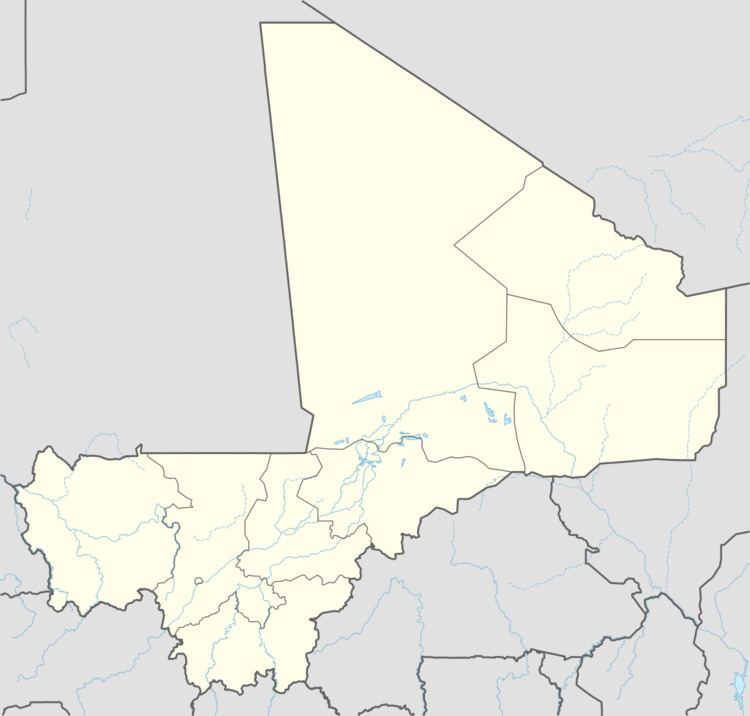Elevation 318 m (1,043 ft) Area 452 km² Population 19,925 (2009) | Time zone GMT (UTC+0) Local time Saturday 10:53 PM | |
 | ||
Weather 30°C, Wind N at 10 km/h, 7% Humidity | ||
Zangasso (also Sangasso) is a small town and commune in the Cercle of Koutiala in the Sikasso Region of southern Mali. The commune covers an area of 452 square kilometers and includes 10 settlements. In the 2009 census it had a population of 19,925. The small town of Zangasso (or Sangasso), the administrative centre (chef-lieu) of the commune, is 30 km southwest of Koutiala on the Route Nationale 11 that links Koutiala with Sikasso.
Map of Zangasso, Mali
The French explorer René Caillié stopped at Zangasso on 12 February 1828 on his journey to Timbuktu. He was travelling with a caravan transporting kola nuts to Djenné. In his book Travels through Central Africa to Timbuctoo published in 1830, he spelled the name of the village as Sanasso. He wrote:
As we advanced the soil became sandy and well cultivated. The country was generally open, yet there were some cés and nédés rhamnus lotus and nauclea. We met a numerous caravan from Jenné, laden with salt. This caravan was composed of about two hundred men, sixty women, and twenty five asses. About nine o'clock in the morning we halted at Sanasso. From Toumaré to Jenné, wood is so scarce that the greater part of the inhabitants burn millet stubble. Sanasso is shaded by bombaces and baobabs. Like all Bambara villages in this region, it is built of bricks baked in the sun. The houses have only a ground floor: they are very dirty, and surrounded with walls.
Caillié recorded details of many of the plants. The "cés" are shea trees Vitellaria paradoxa (formerly Butyrospermum parkii) from which shea butter is made. "Nédé" is Parkia biglobosa. Rhamnus lotus is a synonym for Ziziphus lotus, and his nauclea were probably Mitragyna inermis.
